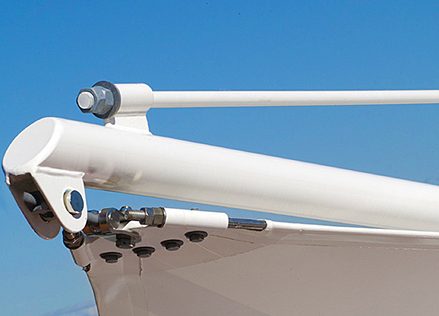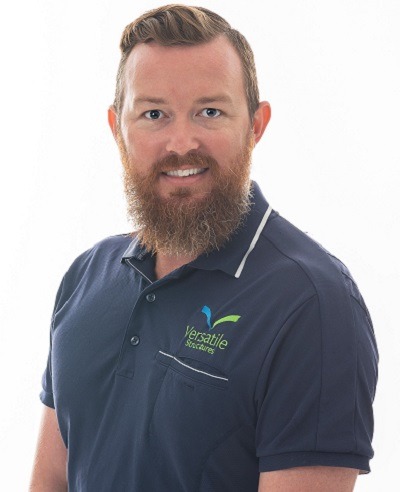YOU ARE HERE:

Fabrics used in tensile membrane structures
Jamie Howard In Shade Sail, Commercial Shade Structures, Shade fabric
What fabrics are used in tensile membrane structures?
Depending on who you talk to in the shade structure industry, the material used to cover the structure can be referenced as either fabric or cloth. Fabric is essentially a material produced by weaving multiple fibres together for strength.
Architectural fabrics is a combination which uses a woven polymer fabric coated or laminated with a synthetic material layer to form a membrane. This membrane is then tensioned over a steel frame to produce a shade structure, umbrellas, facades, or art installation pieces.
The advantages of using a tensile membrane structure created with woven polymer fabrics include
- Lightweight – meaning there is less structural support required which makes it is generally more cost effective
- Translucent – allowing natural light to filter through the material, which means spending less on artificial lighting
- Durable – the polymer fibres do not rust, corrode or breakdown in UVR light which means they have a long-life span
- Aesthetic – tensioned membranes form beautifully curved surfaces allowing architects and designers free range to create unique structures.
The most common architectural fabrics used in tensile membrane structures are
- Vinyl-coated polyester which is a polyester base material laminated or coated with polyvinyl chloride
- Fiberglass, a woven fiberglass base is generally coated with polytetrafluoroethylene
- Transparent polymer films or foils
- Polyethylene mesh or a plastic mesh produced from a variety of base resins. Polyethylene (PE) and polypropylene (PP) offer versatility at a reasonable cost, making them the two most popular resin choices for plastic netting.
- The inclusion of a translucent aerogel in the fabric composition adds insulating properties
UVR considerations
Australia is known for its high UV-radiation, which is especially true for areas like Brisbane, Gold Coast, and Sunshine Coast. Dr Rick Tinker from the Australian Radiation Protection and Nuclear Safety Agency (ARPANSA) said the December 2016 daily maximum UVR index average for Brisbane was 12.4. The highest ever recorded average was 12.5. Obtaining the right fabric with the best UVR rating is critical for a tensile membrane structure. Read more about UV and shade fabric.
Fire considerations
Along with considering UV radiation it is also important to consider how flame retardant material is, especially if the shade structure’s key purpose is to protect people. It is important that shade cloth be tested to AS1530 parts 2 and 3 that uses a fixed flame in contact with the fabric as specified by the Australian Standards. You can read more about shade structures and fire performance.
Conclusion
Essentially there are several elements to consider when choosing a fabric for a tensile membrane structure. It is advised that you speak to a shade sail expert like Versatile Structures, before making a final decision.
Share:
Jamie Howard - Director
Co-founder and Director Jamie has been hands-on in the shade and steel industry since leaving school. With over 15 years’ experience in shade, membrane and steel projects, Jamie is excited about the design opportunities shade structures offer in the commercial and industrial sectors. Jamie’s extensive design skills give him a competitive edge in situations with technical design complexity. He has won two personal industry awards for his designs, alongside many company-won awards.

